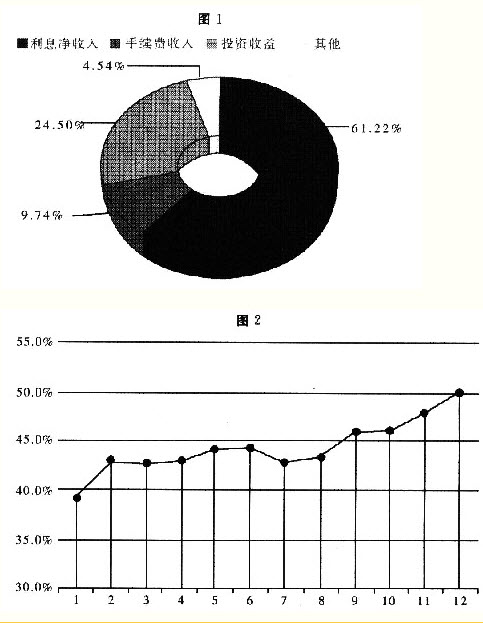2008年,银行业金融机构实现税后利润5834亿元;资本利润率17.1%;资产利润率1.0%。从结构来看,净利息收入、投资收益和手续费收入是收入构成的三个主要部分(见图1)。2008年底,我国银行业金融机构流动性比例50.07%,比年初上升9.9个百分点(见图2)。存贷比69.2%,比年初下降3.3个百分点。12月底,商业银行人民币超额备付金率5.6%,比年初上升2.0个百分点。全部商业银行流动性比例均达到25%以上的监管标准,流动性管理水平总体上升。

2008年银行业金融机构的手续费收入约为()。
A.997.6亿元
B.1429.3亿元
C.554.6亿元
D.568.2亿元
参考答案:D
解析:
2008年,银行业金融机构实现税后利润5834亿元:从图中可知手续费收入所占的比例为9.74%,故而手续费收入为:5834×9.74%≈568.2(亿元),因此本题选D。
